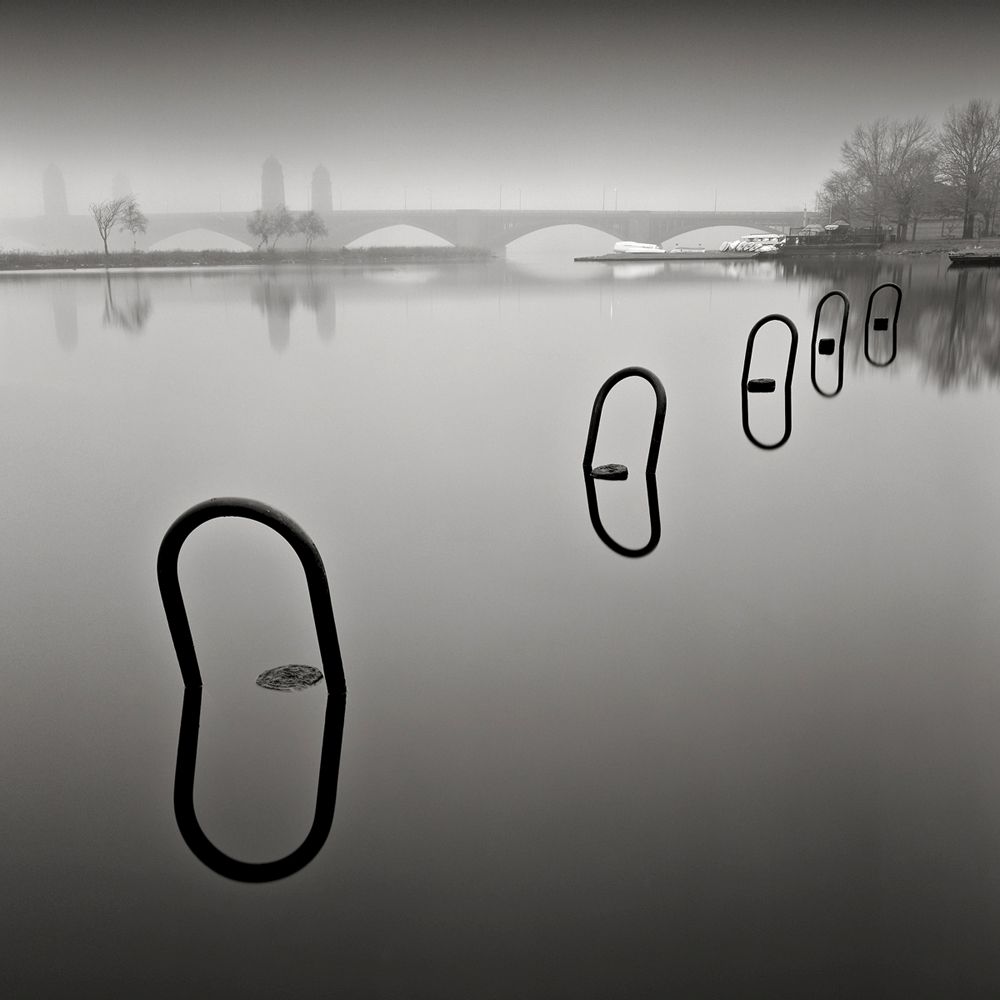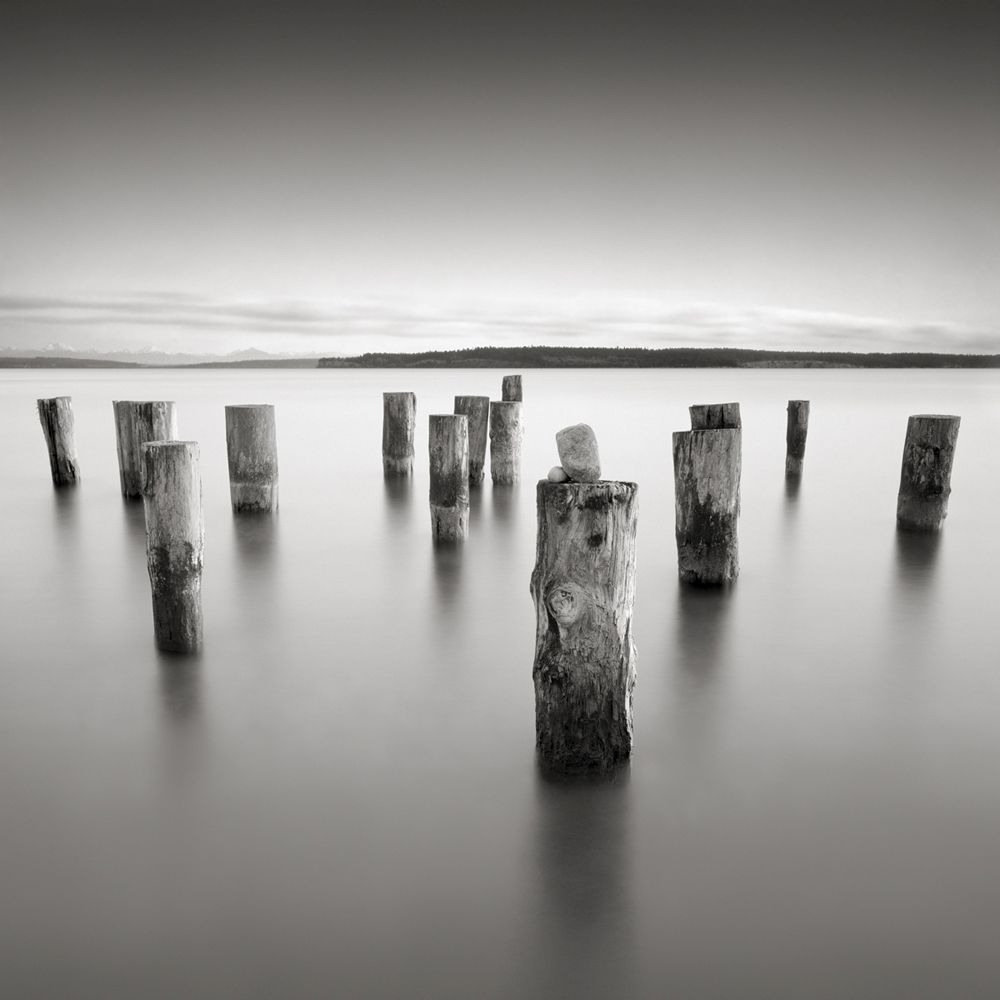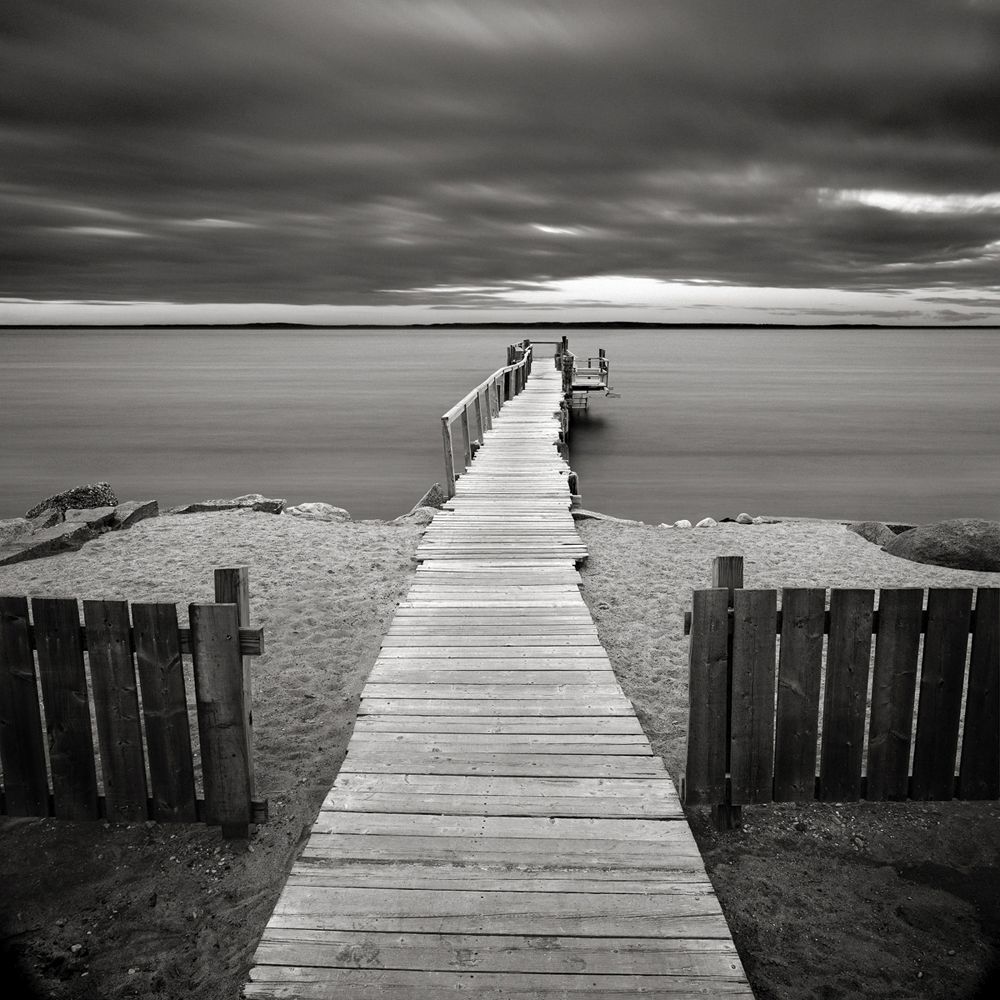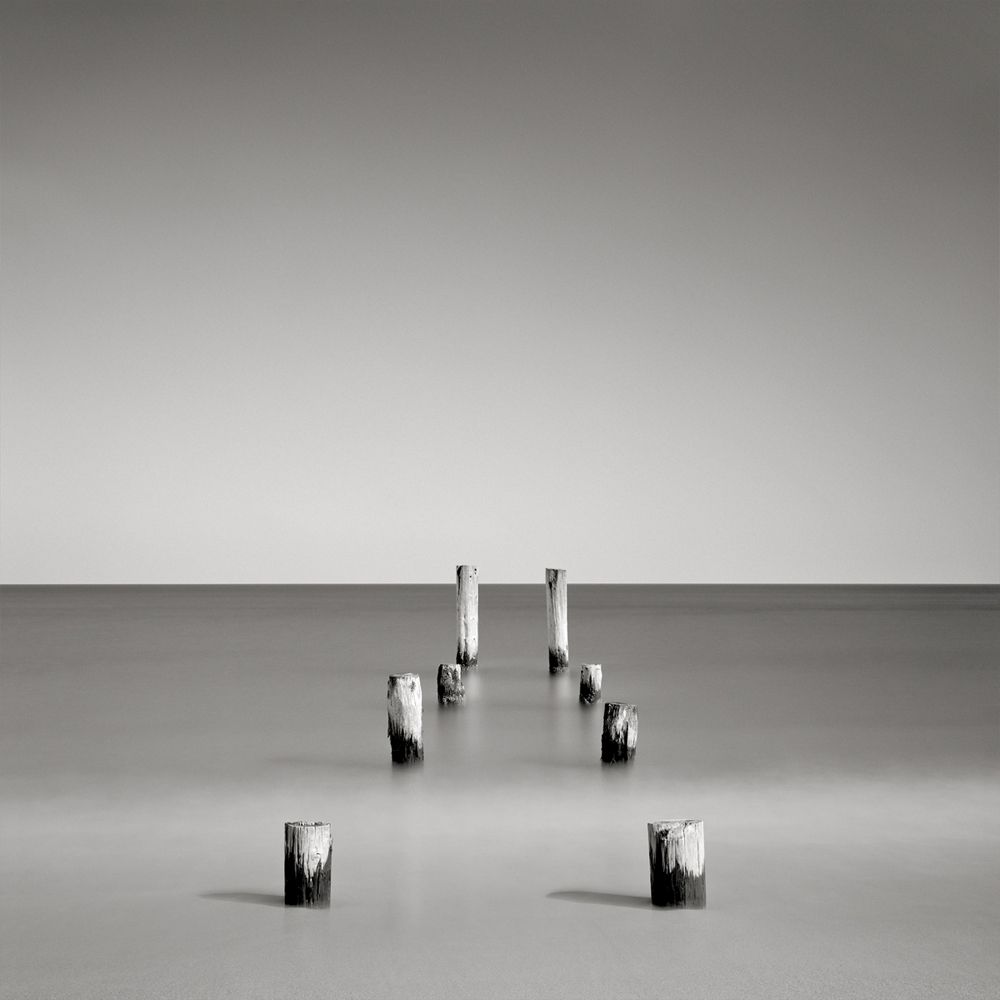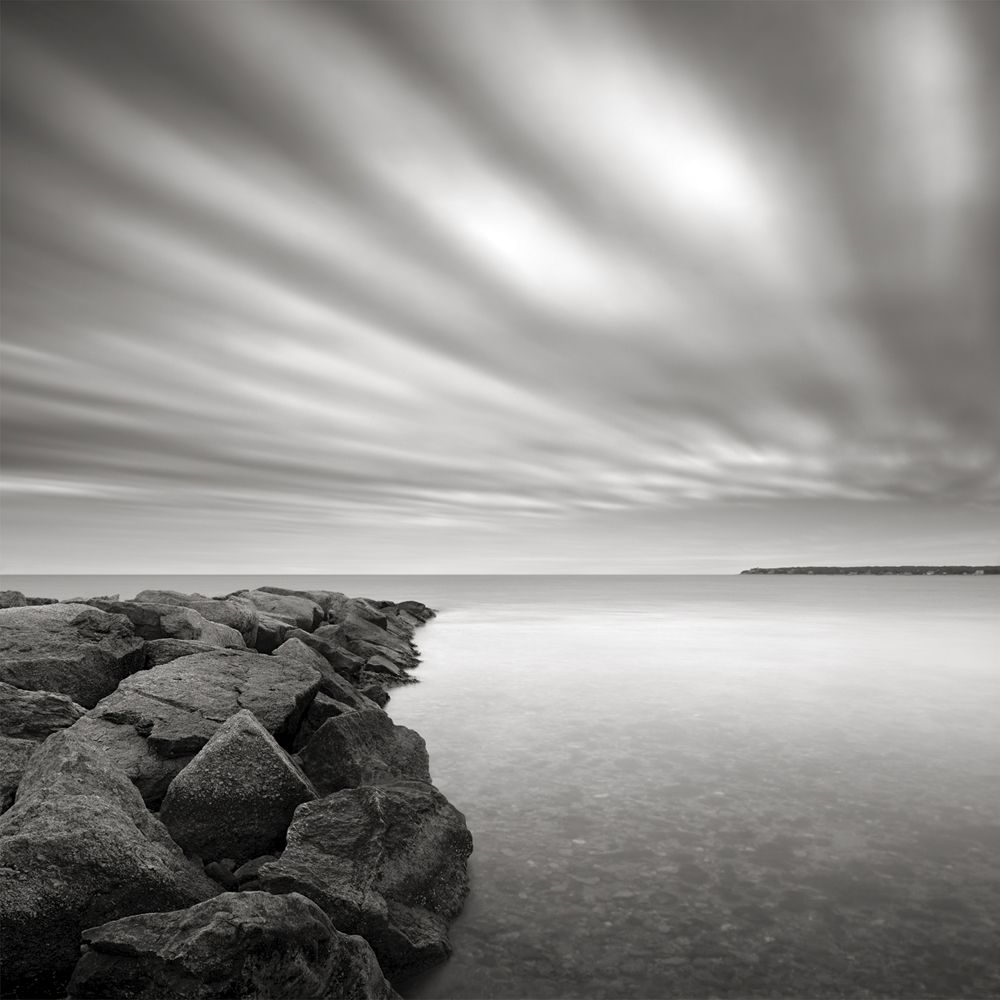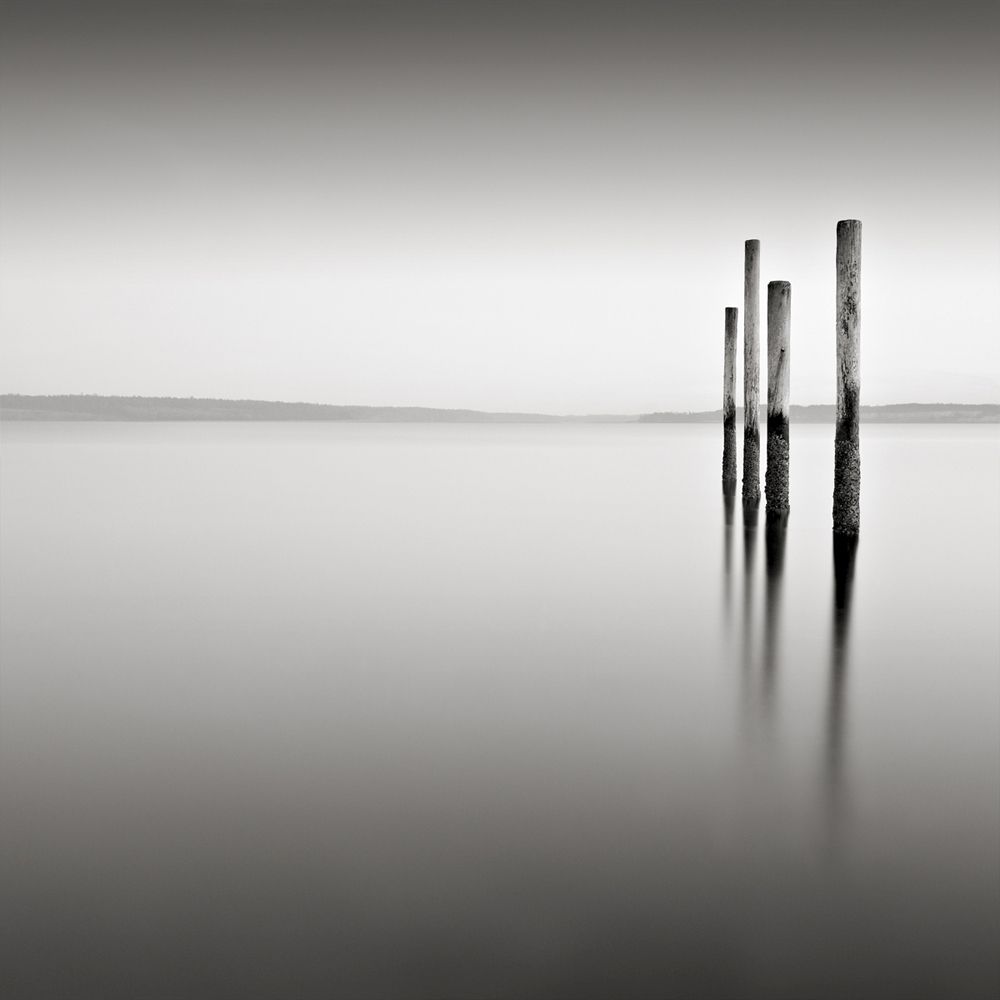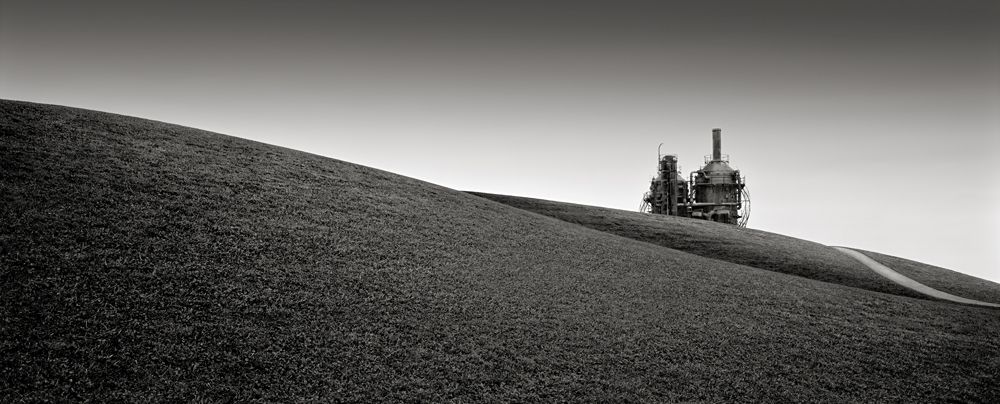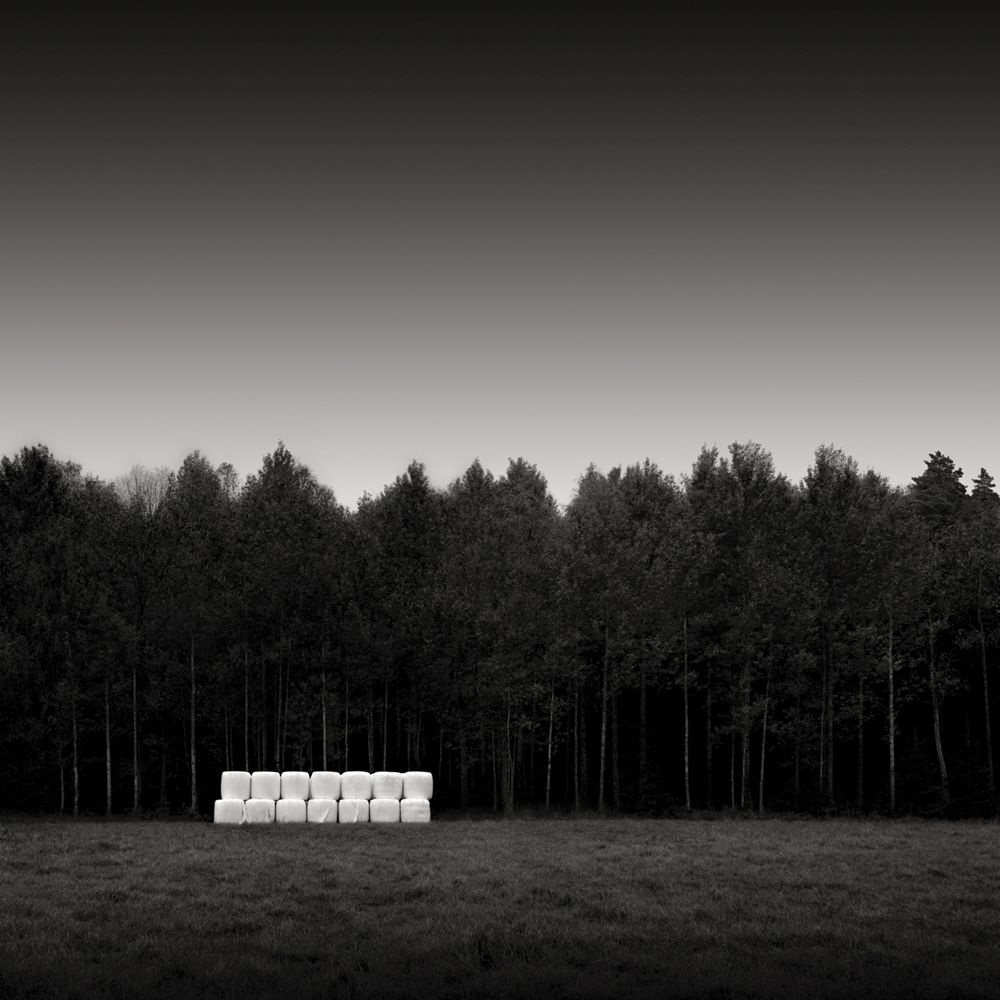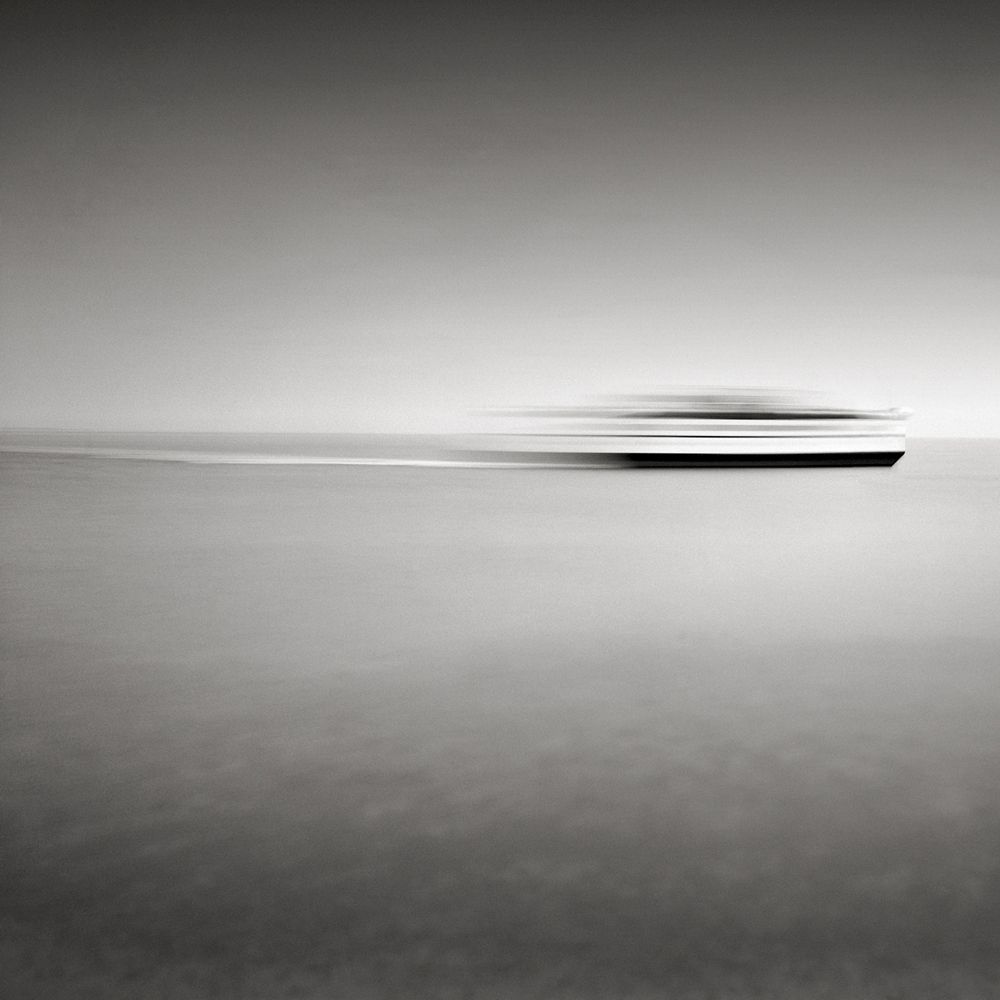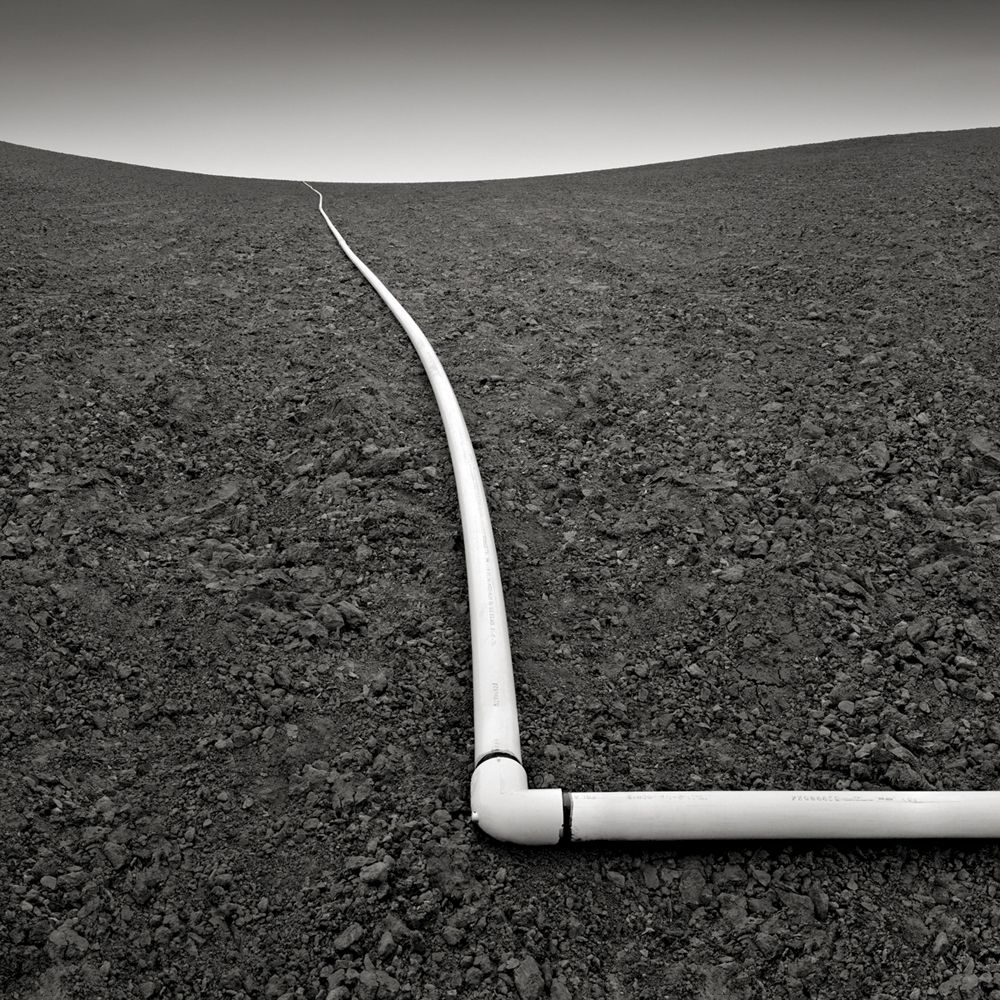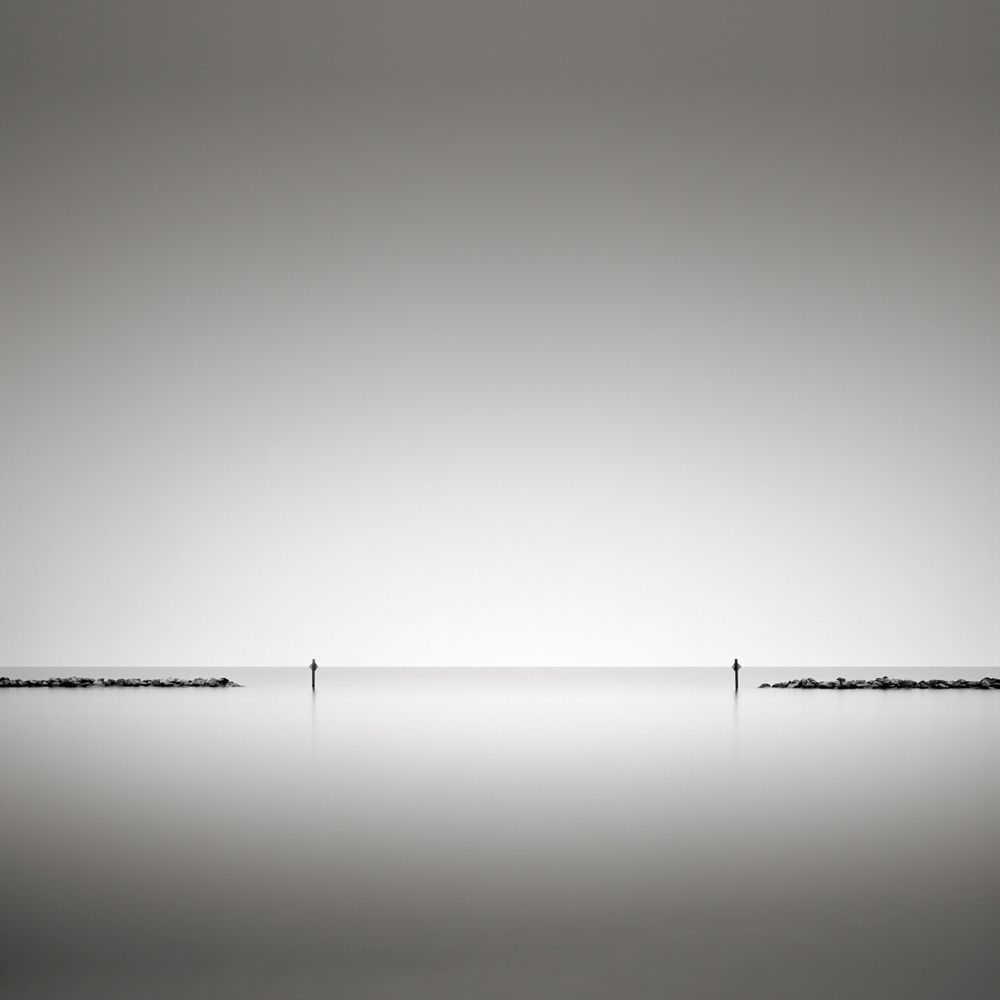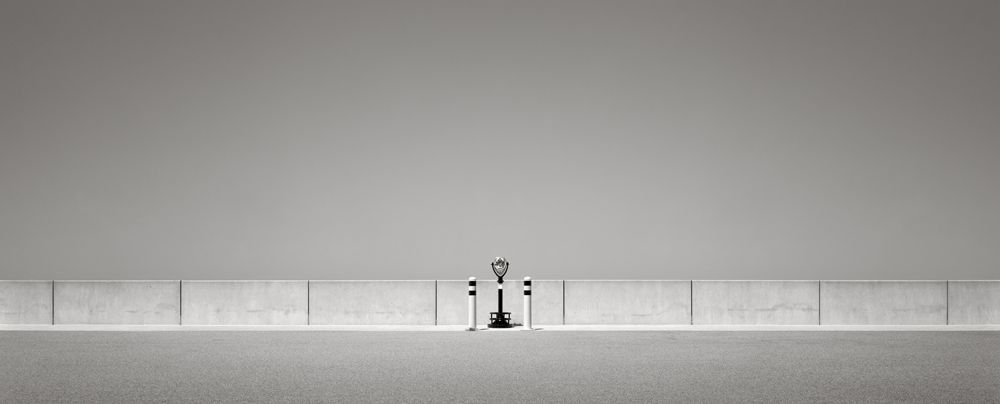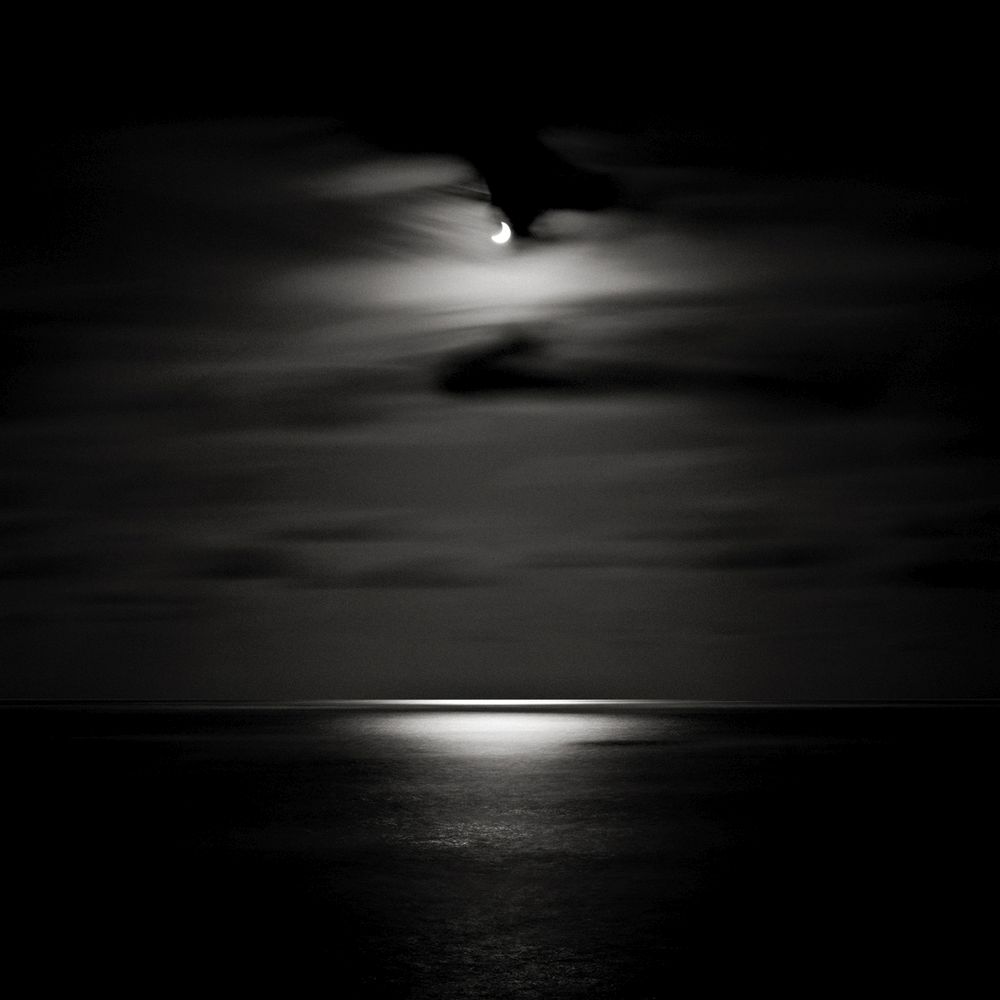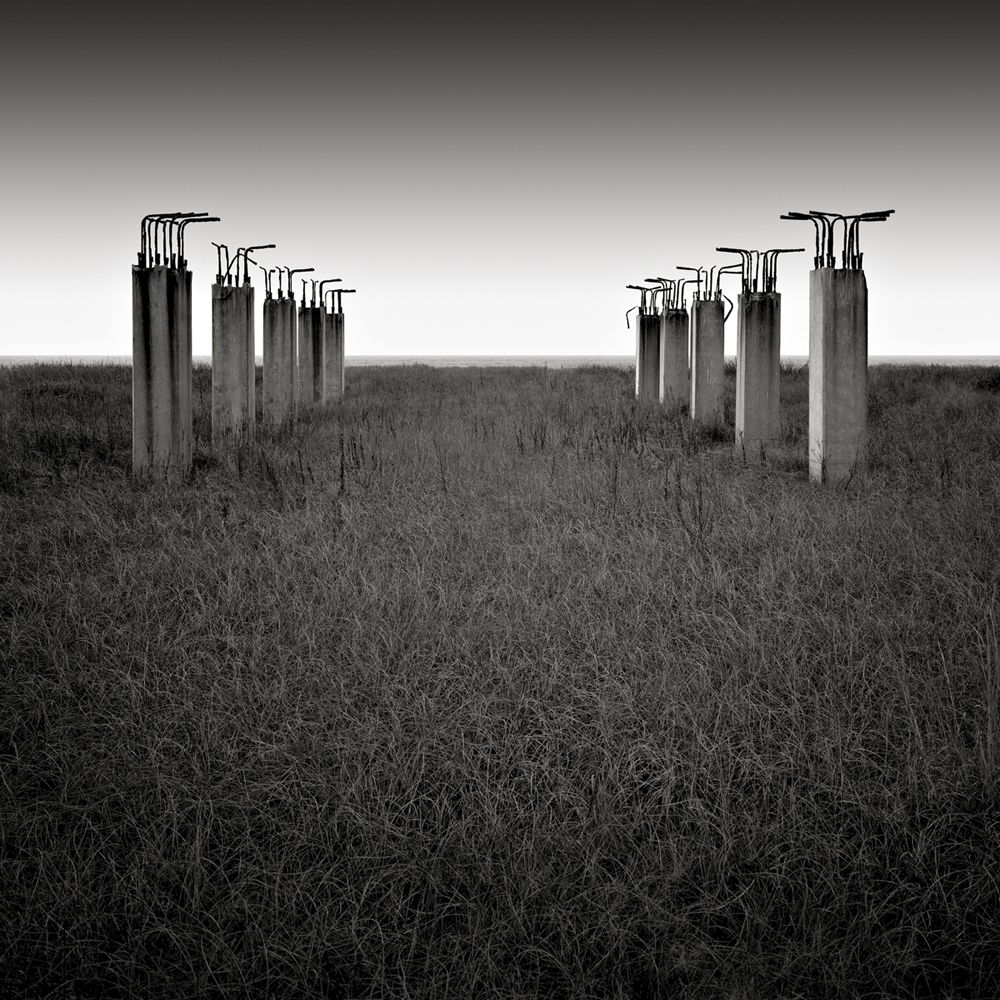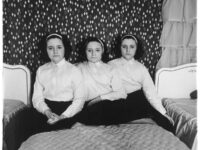David Fokos was born in 1960 in Baltimore, MD and currently lives in San Diego, CA.
Using an 85-year old 8×10 view camera, world-renowned artist David Fokos has been photographing the landscape for over 30 years. Often working 100 hours or more to craft a single image, his elegant black and white images have been lauded as masterpieces of minimalism. Represented by 14 galleries on three continents, Fokos’ work can be found in many museum, corporate, and private collections.
How and when did you become interested in photography?
My grandfather gave me my first camera — a Kodak Brownie — when I was 11 years old, just prior to a trip to Hungary with my family. Interestingly, rather than the usual sort of family snapshots one might expect of an 11 year old, I was already showing an affinity for the landscape and a certain type of composition — taking pictures of looming church spires, zoomy perspectives along building facades, and the patterns found in the cobblestone streets.
Not long after that I began using my father’s Pentax Spotmatic. Later, as a teenager, I became more interested in photography as a serious hobby. I took a high school photo class where I learned the basics (how to develop film, make prints, etc.) and I sold my first photograph — a red barn in a snowstorm — for $50, framed.
Is there any artist/photographer who inspired your art?
As a high school student, the work of Ansel Adams inspired me to photograph the landscape with a view camera. I admired Adams’ methodical, scientific approach and the quality of his b&w prints — the infinite depth of field, the high resolution, and the full tonal range.I set out to emulate him, and soon after heading off to college I purchased my first view camera – a 5×7 Korona View from the 1920’s. Up to that point I had never even seen a view camera in person.
I had never even held a view camera before, but I bought this one out of the want ads, and then taught myself how to use it. I spent the next 15 years working in isolation on Martha’s Vineyard with the goal of creating images that would express the essence of my experience — evoking within the viewer the same emotions I felt when making the images. With my work, I’m not trying to show the viewer what these places look like, but rather what they feel like.
Much of my work has to do with encoding the element of time within a static image. An emotional experience requires a period of time – no one is instantaneously bored, for example. So for a work of art to be able to convey that emotion, the experience of time must be encoded into it. Artists have struggled with this problem for hundreds of years – you can find examples of this in 17th Century Chinese scrolls, the cubist works of Marcel Duchamp and Charles Demuth, and the earthworks of Robert Smithson, for instance.
In more recent times, the entropy-related earthworks of Andy Goldsworthy, the Shinto-inspired photographs of Hiroshi Sugimoto, and David Hockney’s flirtation with photography have also explored this subject. I found Hockney’s discussions about art and photography, as chronicled in the book, Hockney on Art: Conversations with Paul Joyce, to be especially thought provoking.
Why do you work in black and white rather than color?
Color is such a powerful element in an image. The emotions I try to evoke with my images are not rooted in color but rather in line, light and form so I think that color would only be a distraction in my work.
How much preparation do you put into taking a photograph/series of photographs?
The places where I find myself making images are those to which I have a strong, positive, emotional reaction. More often than not, these are places that through their stillness, expansiveness, stark simplicity, or the juxtaposition of man-made objects with nature, evoke within me a sense of quiet contemplation.
My intention as an artist is to evoke within the viewer, the same emotion I felt when I made the image. In this respect I am not trying to show the viewer what these places look like, but rather, what they feel like.
I work toward this goal by emphasizing certain emotional triggers while de-emphasizing any distractions. I have found that minimalist compositions have been the most effective means of evoking a pure emotion within the viewer.
To compose in a minimal way, I first decide what it is that I wish to convey – what is it in the scene that I want the viewer to focus their attention upon, and what emotion I want to evoke. Then, I try to minimize anything else that competes with that. The composition becomes critical – specifically how the main elements interact with any lesser elements, the horizon, the positive and negative spaces created by their placement, the edges of the frame and the tension or harmony created by the positions of everything within the frame. When composing, I pay particular attention to the background and the edges of the frame to make sure there is nothing there that will be a distraction.
Lately, I have been working more with a Phase One p45+, 39MP, medium-formatI, digital back on a Hassleblad H1, however, most of the images in my portfolio were shot on 8×10 Kodak Tri-X Professional film with my 86-year old Korona View camera. I still continue to make some shots with the 8×10. With the 8×10 I use just one lens – a 210mm Rodenstock Sironar-S. This lens is a wide-angle lens on my camera (the equivalent of a 29mm lens on a 35mm camera). On the Hassleblad, I also use just one lens, a 35mm (which is the equivalent of about a 28mm lens on a 35mm camera.) Ironically, having only one lens to choose from allows me greater freedom. If I had a number of lenses I would continually be trying to decide which lens to use. When you only have one lens, you never have to think about it. Instead of being paralyzed by indecision, I am free to concentrate on my compositions.
My 8×10 equipment weighs 60lbs. I have to ship my gear, in advance, to wherever I want to go. When shooting, I go out with 12 sheets of film. I shoot at least two of everything just in case something happens to one of the negatives. Sometimes, I’ll try different exposure times, different compositions, or different filter combinations. This means that when I go out I am usually only able to take one or two shots before I have to reload my film holders in a darkroom or changing tent. My camera is very susceptible to wind – so windy days and windy places are out. After shooting and then shipping my film and camera equipment home again, I develop my film – 5 sheets at a time in a Jobo. Only then do I have the first chance to see if any of my shots are worthwhile.
If I have a negative I like I then wet-mount the 8-inch by 10-inch film to my scanner and scan it at a very high resolution (16-bits @ 2400 ppi). This results in an 800MB grayscale image file (which is equivalent to the resolution of a 2.4GB color file). At this point, my analog and digital workflows converge. Once I have an image file in the computer it doesn’t matter whether I shot it with my 8×10 or my Phase One digital back.
This is when the real work begins. I often spend 100 hours or more, fine-tuning the image – dodging and burning (making certain areas lighter or darker), adjusting local contrast and so on.. As photographers we need to remember that the camera doesn’t record emotions. This is the part of the process where I add the emotion back into the image that my camera recorded.
Our eyes are naturally drawn toward light. I work to craft my images in a way that takes the viewer on a little trip — the trip I want them to take: enter the image here, look at this, then this, and finally exit there. So, for example, if I want the viewer to focus on a certain part of an image, I make sure that the little white boat over toward the right side glows, while the left, top and bottom of the image are made darker. I make hundreds of local contrast adjustments, and I make sure that there is nothing that will distract the viewer. Everything must be in perfect harmony.
Sometimes I’ll work for many, many hours on an image and then, in the end, have to discard it having decided that I couldn’t make it work to my satisfaction. However, once I am finally satisfied with an image, I can then make prints on my Epson 11880 printer.
Where is your photography going? What projects would you like to accomplish?
In general, I will continue to explore the landscape and the ocean as I have done for 35 years – I am always fascinated by how much I learn from these images.
Before the end of the year I will again be traveling to Martha’s Vineyard where I hope to make some exciting new photos.
I would also love to go back to Japan, where I have had several exhibitions, to make a series of images there. Specifically, since so much of my existing work is from the island of Martha’s Vineyard, I think it would be very interesting to explore an island in Japan. I think an exhibition of images drawing from both bodies of work would make for a very interesting cross-cultural project.
Website: www.davidfokos.net



